Table of Contents
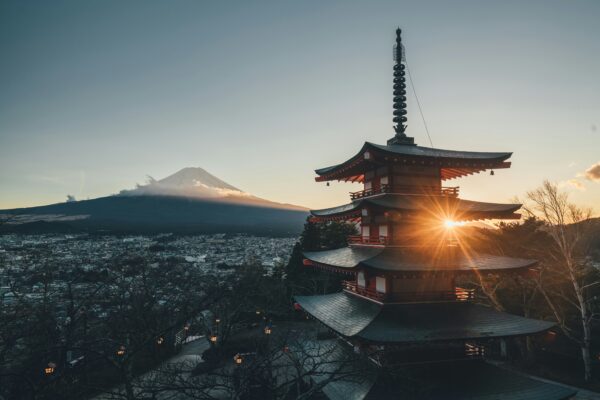
Japan is a beguiling nation that seamlessly integrates its ancient heritage and rich culture with cutting-edge technology, qualifying it as one of the world’s most interesting destinations for travelers. When you are ready to travel and are looking for information on where to go, this Japan travel guide is specifically designed to assist you in learning more about the places to go to in Japan, as well as details about Japan’s culture, cuisine, and traveling advice. Japan’s charm is not merely in its scenic landscapes and cityscapes, but also in the gracious, peaceful, and harmonious style of life that its people represent.
Whether it is the ancient temples of Kyoto, the neon-lit busy streets of Tokyo, or the serene nature areas dotted here and there throughout the nation, Japan has something for everyone’s palate and interest. The nation’s distinct seasons enhance its beauty, from cherry blossoms covering the terrain in pink hue during spring and blazing red maple leaves creating jaw-dropping fall landscapes. Traveling ahead with this guide will assist you through Japan’s complicated rail networks, cultural niceties, and eating experiences, and guarantee a flawless and profoundly gratifying experience.
In this Japan Travel Guide, you will learn about the cultural subtleties that set Japan apart, the richness of food that satisfies every taste bud, and a selected list of places to visit that highlight the diversity of the nation. The aim is to provide you with information to ensure that you get the most out of your visit without disregarding local practices and traditions. From ancient sanctuaries and serene gardens to contemporary art museums and skyscraper observatories, Japan is a place where tradition and innovation blend together, challenging you to immerse yourself in its boundless marvels.

Understanding Japan’s Culture
Japan’s culture is an intriguing tapestry of centuries-old traditions, religious practices, and a very strong respect and harmony orientation. This richness of culture pervades every detail of daily life and fosters an atmosphere in which politeness and thoughtfulness toward others are highly treasured. If you desire to better appreciate your stay, it’s critical that you gain some understanding of these cultural basics.
Perhaps the most conspicuous symbol of Japanese culture is the bow, the age-old greeting that shows respect and humility. Meeting a person for the first time or paying respects to a shopkeeper are just a few common situations where bowing is a part of the social etiquette. The depth and length of the bow can also show the respect level ranging from a quick nod to a profound bow at the waist. Mastering when and how to bow will assist you in fitting in and expressing sincere gratitude for the culture.
Another significant cultural convention is the etiquette of taking off shoes before stepping inside houses, temples, and some traditional establishments. The tradition keeps things clean and represents leaving the external world outside while entering a sacred or personal world. Slippers are usually laid out for visitors to wear, and following this practice is an easy yet deep way to honor Japanese traditions.
Traditional ceremonies and arts provide a firsthand experience of Japan’s heritage. Taking part in or just watching a tea ceremony, for example, brings out the fastidious attention to detail and religious awareness that pervade much of Japanese culture. Festivals such as the viewing of cherry blossoms, Gion Matsuri in Kyoto, and snow festivals in Hokkaido are colorful experiences of the people’s relationship with nature and history.
It also shows the cultural values of Japan, with its intricate honorifics system and polite language illustrating the value placed on hierarchy and deference. Even if you are not fluent in Japanese, learning basic phrases like “arigatou” (thanks) and “sumimasen” (sorry/excuse me) can go a long way towards establishing goodwill.
Overall, an open mind and respectful attitude embracing Japan’s culture will make your travels all the better. The peaceful temples, crowded markets, and serene gardens you see will feel alive with significance as you journey through Japan beyond its stunning landscapes. This knowledge is the starting point for learning the best things to see in Japan with a true appreciation.
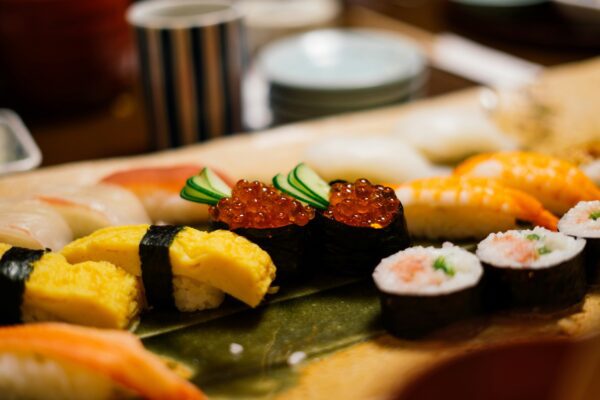
Japanese Cuisine: A Food Lover’s Paradise
Japanese food is renowned globally for its subtle balance, use of fresh ingredients, and aesthetic presentation. The culinary arts in Japan, though, extend way beyond sushi and sashimi, with a diverse array of flavors and dishes that represent the regional differences, history, and values of the nation. This part of the Japan travel guide ventures into the numerous food delights that await food enthusiasts and explains why sampling indigenous foods is an integral component of your traveling experience in the top destinations in Japan.
Seasonality is one of the underlying traditions in Japanese cuisine. Chefs, as well as home cooks, place great emphasis on using ingredients at their freshest stage, thereby guaranteeing every meal is full of natural flavors. This focus on seasonal ingredients is seen in kaiseki, a classic multi-course meal that honors the balance of taste, texture, appearance, and colors. Kaiseki dishes tend to shift monthly, mirroring the shifting seasons and providing diners with a constantly changing taste of Japan’s culinary scene, which this Japan travel guide highlights as essential for cultural immersion.
In urban cities such as Tokyo and Osaka, street food culture is alive and well alongside fine dining restaurants. Ramen restaurants, with their speciality rich broths and pulled noodles, fill with people wanting to eat hearty, inexpensive food. Every region in Japan has its own twist on ramen, from Hokkaido’s miso-flavored bowls to Tokyo’s light, soy sauce-based types. In the same way, Osaka is renowned for its takoyaki — scrumptious dough balls stuffed with octopus and grilled on a flat pan — and okonomiyaki, a meaty, seafood-packed, cabbage-filled pancake usually grilled before your very eyes. Any comprehensive Japan travel guide would be incomplete without spotlighting these local specialties.
Rice is still a mainstay in Japanese cuisine, presented as plain steamed rice with other dishes or developed into sushi and onigiri (rice balls). Sushi making, popular the world over, is at its best in Japan, where the quality of the fish and attention to detail turn this humble food into a gastronomic treasure. Go to sushi bars where each piece is crafted by hand with skill and dedication, inviting you to savor centuries of refinement in a taste — a detail the Japan travel guide encourages every visitor to experience firsthand.
Japanese sweets, or wagashi, should also be noted. These sweets, usually consisting of red bean paste, mochi, and seasonal fruits, are served at tea ceremonies and as daily snacks. Their lighthearted textures and subtle sweetness provide a beautiful contrast to the bitterness of matcha tea and make a perfect harmony of taste. Tasting these traditional sweets provides insight into Japan’s aesthetics and philosophy of cooking, something emphasized throughout this Japan travel guide as part of your culinary journey.
For the travelers who are discovering Japan’s greatest places to visit, street food markets such as Tokyo’s Tsukiji Outer Market or Kyoto’s Nishiki Market offer sensory indulgence. Here, you can sample fresh seafood, grilled skewers, pickled vegetables, and so much more, usually made to order. Interacting with local vendors and sampling true street foods gives a rich aspect to your traveling experience, turning food into an adventure itself — just as this Japan travel guide recommends for a truly immersive trip.
Overall, Japanese food is all part of your cultural experience and a trip highlight. This Japan travel guide invites you to venture outside the comfort zone and enjoy Japan’s rich variety of dishes, from street food to exquisite meals, making your trip richer in unforgettable flavors.
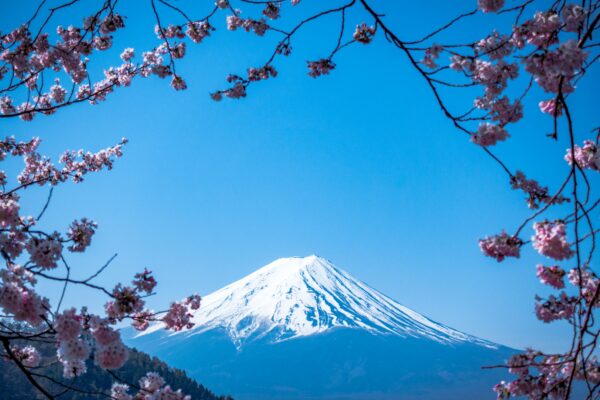
Best Places to Visit in Japan: Tokyo – The Heartbeat of Modern Japan
Tokyo, the sprawling capital city of Japan, is a dazzling metropolis where tradition and cutting-edge modernity coexist in perfect harmony. As the first major stop in this Japan travel guide, Tokyo offers a vibrant and diverse array of attractions, making it one of the best places to visit in Japan for travelers of all interests. From towering skyscrapers and bustling shopping districts to serene shrines and historic neighborhoods, Tokyo is a city that never fails to captivate.
At the core of Tokyo’s appeal is its fascinating blend of old and new. The city is home to ancient temples such as Sensō-ji in Asakusa, which stands as a testament to Japan’s rich spiritual heritage. Walking through the temple’s iconic Kaminarimon Gate, you’re transported back in time amidst the scent of incense and the hum of traditional prayers. Nearby, Nakamise Street offers an array of souvenir shops and street snacks that give visitors a taste of classic Tokyo culture.
In stark contrast, districts like Shibuya and Shinjuku showcase Tokyo’s ultramodern side. Shibuya Crossing, arguably the busiest pedestrian scramble in the world, symbolizes the city’s energy and pace. Here, neon billboards, stylish boutiques, and endless dining options create a sensory overload that’s exhilarating to experience. Shinjuku, with its towering skyscrapers and nightlife, offers both high-end shopping and entertainment, alongside the tranquil Shinjuku Gyoen National Garden—a peaceful oasis amidst the urban jungle.
For technology enthusiasts and pop culture fans, Akihabara is a must-visit. Known as Tokyo’s “Electric Town,” Akihabara is packed with stores specializing in electronics, anime, manga, and video games. This district embodies Japan’s forward-looking tech culture and is a great place to pick up unique souvenirs or experience themed cafes that celebrate Japanese gaming and animation.
Tokyo also prides itself on culinary diversity. From Michelin-starred restaurants to tiny ramen shops tucked away in alleys, the city caters to all tastes and budgets. Tsukiji Outer Market, although the inner wholesale market has moved, still thrives with stalls selling fresh seafood and traditional snacks, making it a food lover’s paradise.
Transportation in Tokyo is impressively efficient, with its extensive subway and train systems connecting the city’s various neighborhoods seamlessly. Utilizing the Suica or Pasmo travel cards simplifies commuting, allowing visitors to explore the sprawling city with ease.
For travelers following this Japan travel guide, Tokyo represents a gateway to both modern thrills and historic exploration. Its endless attractions, cultural landmarks, and unique neighborhoods make it a cornerstone on any itinerary when exploring the best places to visit in Japan. Spending several days here lets you immerse yourself in the vibrant energy and subtle traditions that define this captivating city.

Kyoto: The Cultural Capital of Japan
Kyoto, the former imperial capital of Japan for more than a thousand years, is the very essence of traditional Japanese heritage and culture. For anyone looking to explore the top destinations in Japan, Kyoto is a must-visit destination that provides an immersive experience into the nation’s rich history, breathtaking temples, lovely gardens, and age-old traditions. The city is a perfect blend of preservation and accessibility, where tourists can travel back in time while still enjoying the comforts of modernity.
Kyoto is renowned for its magnificent array of UNESCO World Heritage sites, with more than 17 sites encompassing grand temples to breathtaking gardens. Among the most celebrated is Kinkaku-ji, the Golden Pavilion, whose gold leaf gilded facade glistens magnificently over a serene pond. A visit to this destination provides a serene experience rich in history and artistry, displaying the zen-inspired sensibilities that have shaped Japanese architecture for centuries.
Another temple one cannot miss visiting is Fushimi Inari Taisha, famous around the globe for its photographs of its unique thousands of vermillion torii gates curling up the mountain paths. The holy Shinto shrine provides a special hiking experience via serene forests, where the colorful gates form stunning pathways that represent wealth and good luck. A visit to Fushimi Inari at early morning or late evening enables visitors to steer clear of tourists and absorb the spiritual ambiance.
Gion, the historic geisha quarter of Kyoto, is another gem that travelers enjoy. Strolling through its narrow lanes filled with old wooden machiya houses, tea houses, and kaiseki restaurants, you get to see glimpses of geishas and maikos (apprentice geishas) leading their busy lives. Gion is not merely a place of sightseeing but also of experiencing living history through performances, festivals, and traditional cultural ways of life that have been maintained for generations.
Kyoto’s cuisine is rooted deeply in its culture. Kaiseki, the multi-course haute cuisine that features seasonal ingredients and artistic presentation, is believed to have originated here. Tasting kaiseki dishes in Kyoto offers a unique chance to sample the careful attention and local flavor specific to this city.
Nature enthusiasts will enjoy Kyoto’s lovely gardens and parks, like the peaceful Arashiyama Bamboo Grove and the extensive Philosopher’s Path covered in cherry blossoms. These places are peaceful escapes from city life and photogenic moments, particularly at sakura time.
Public transportation in Kyoto is easy, with buses and trains serving the main attractions well. To have a real local experience, bike rentals to ride through the city’s quaint neighborhoods are favored by tourists.
In this guide to Japan travel, Kyoto is a cultural gem and an inner peace haven for those who want to immerse themselves in Japan’s heritage. Spending several days here expands your knowledge of Japanese beauty, spirituality, and history—making Kyoto a memorable highlight of your trip to the top destinations in Japan.
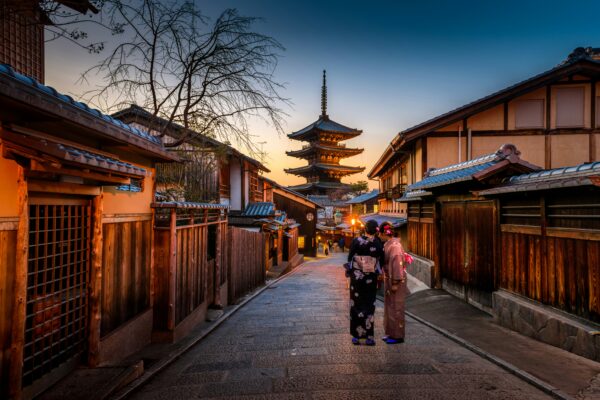
Osaka: The Foodie’s Haven and Vibrant City
Osaka, commonly referred to as the “Kitchen of Japan,” is a city with just the right blend of energetic urban life and hospitality along with globally famous food. For tourists using this Japan travel guide, Osaka is a place that no traveler visiting Japan should miss, especially for those interested in food and with a desire to experience an exciting atmosphere together with rich history. Reputed for its vibrant streets, neon nightlife, and earthy residents, Osaka is an experience that differs from Tokyo’s high-tech modernity and Kyoto’s ancient allure.
Osaka’s food culture is the stuff of legend. The city’s motto, “kuidaore,” which means “eat till you drop” in rough translation, and it delivers on this promise with a veritable smorgasbord of tasty, affordable fare. Street food stands and snack bars line streets such as Dotonbori and Shinsekai, which serve specialties worth trying such as takoyaki—fried octopus balls cooked on a flat griddle and topped with rich sauces—and okonomiyaki, a meat-filled and seashell-studded savory pancake. To try these local specialties while walking along the canal lined with neon lights in Dotonbori is an experience that best describes Osaka’s vibrant atmosphere.
Aside from street food, Osaka has Michelin-starred restaurants as well as izakayas (Japanese bars), where you can sample anything from fresh sushi to yakiniku (grilled meat). Kuromon Ichiba Market is where you can sample different kinds of fresh seafood, seasonal fruits, and classic snacks. The market is a thriving place where food is cooked right in front of you, providing you with an opportunity to enjoy the freshest flavors.
Osaka’s cultural offerings complement its food scene. The city boasts impressive landmarks like Osaka Castle, a historic fortress that played a key role in Japan’s unification. The castle grounds are a beautiful place for a stroll, especially during cherry blossom season. Nearby, the Umeda Sky Building offers panoramic views of the city skyline, perfect for photography enthusiasts and romantics alike.
Osaka has plenty of entertainment options, ranging from Universal Studios Japan—well known for its action-packed rides and attractions based on blockbuster movies—to the city’s lively nightlife areas where live music venues, comedy clubs, and karaoke bars offer round-the-clock fun. Unlike some of Japan’s more conservative cities, Osaka’s welcoming and social residents contribute to the open atmosphere that makes guests feel like home.
Osaka is well-serviced with regard to transportation and is very visitor-friendly, possessing a vast underground railway network which covers all places of interest. It also forms a convenient starting point for visits to surrounding cities like Nara and Kobe so that visitors may further explore the Kansai area.
For those reading this Japan travel guide, Osaka is a city where food, history, and contemporary entertainment blend together in perfect harmony. Its lively atmosphere and culinary riches make it one of the top destinations in Japan, particularly for those who want to experience the nation’s modern culture and cuisine in a friendly and accessible environment.
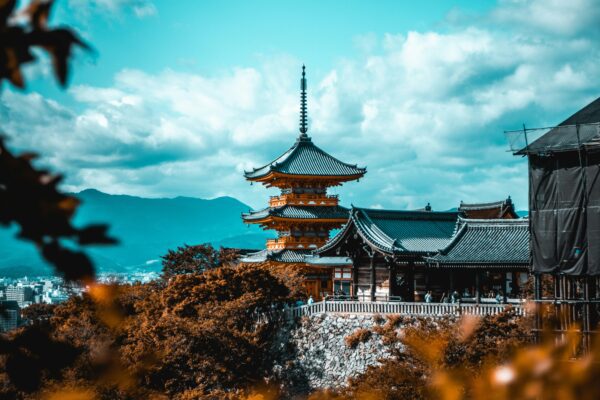
Hokkaido: Nature and Adventure in Northern Japan
Hokkaido, Japan’s northernmost island, provides a welcome relief from Tokyo and Osaka’s bustling metropolises. Famous for its stunning natural beauty, outdoor recreation, and clear-cut seasons, Hokkaido is a haven for nature enthusiasts and thrill-seekers. In this Japan travel guide, Hokkaido ranks among Japan’s top destinations for tourists seeking to enjoy untouched wilderness, global-class skiing, and offbeat cultural events.
One of the most popular spots in Hokkaido is its national parks, including Daisetsuzan and Shiretoko, which provide varying ecosystems from alpine mountain terrain to deep forests. Both of these parks feature great trails to hike, game viewing areas, and magnificent scenery, particularly when the foliage in autumn provides a backdrop of glowing red and gold colors. The area’s fresh air and open spaces create a serene getaway from city chaos, encouraging tourists to reconnect with nature.
Winter in Hokkaido is famous for having some of the world’s finest powder snow, and it’s a favorite ski and snowboarding destination. Places such as Niseko, Furano, and Rusutsu welcome winter sports fans worldwide due to their well-groomed slopes, state-of-the-art facilities, and picturesque surroundings. Other than skiing, tourists can experience hot springs, or onsen, which are found all over the island. These natural hot baths are a relaxing experience after a day outdoors and are part of Japanese tradition.
The capital city of Hokkaido, Sapporo, is well-known for its yearly Snow Festival that turns the city into a winter wonderland as giant snow and ice sculptures take over. This lively celebration welcomes millions of tourists and presents an eclectic mix of art, entertainment, and food. Sapporo is also known for its dynamic food scene with fresh seafood from nearby oceans, rich dairy, and hot dishes suitable for the frigid weather.
Hokkaido’s cuisine is unique, with specialties such as fresh crab, sea urchin, and Jingisukan (grilled lamb) that mirror the island’s abundant natural produce. Street stalls and farmers markets in cities such as Sapporo and Otaru are good venues to try these local specialties. The island’s dairy products, such as soft-serve ice cream and cheese, are among the best in Japan.
For the traveler interested in cultural experiences, Hokkaido’s indigenous Ainu culture provides an interesting glimpse. Museums and cultural centers offer the chance to discover the history, crafts, and customs of the Ainu people, adding a deep dimension of cultural insight to your journey.
Travelling within Hokkaido is made easy by a well-established transport system of trains, buses, and hire cars, which are most advisable for reaching secluded natural spots. The relaxed pace of the island and expansive areas differ from Japan’s city centers, which makes it a perfect destination for people looking for peace as well as adventure.
In short, Hokkaido’s special blend of natural scenery, outdoor activities, cultural diversity, and great local food makes it one of Japan’s top destinations. This Japan travel guide features Hokkaido as a must-visit destination for travelers seeking a different, revitalizing aspect of Japan’s varied landscape.
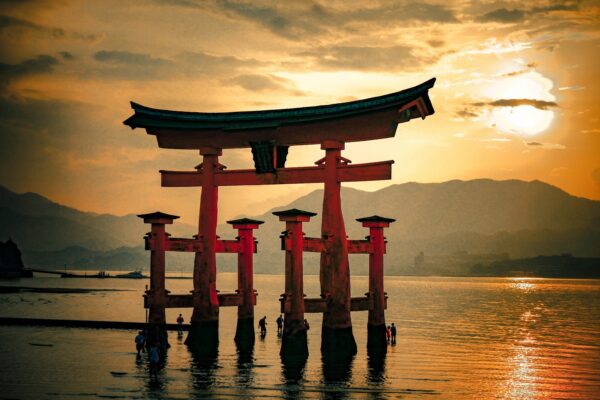
Hiroshima: History and Resilience
Hiroshima is a city of resilience, hope, and peace that epitomizes one of the most important places in your Japan travel guide and one of the top destinations in Japan. Famous throughout the globe for its somber past as the world’s first city bombed by an atomic weapon in World War II, Hiroshima is nowadays a thriving, rebuilt city committed to upholding peace and remembrance. A visit to Hiroshima provides tourists with a deeply enriching experience that blends historical learning, cultural introspection, and contemporary city living.
The Peace Memorial Park and Museum form the core of Hiroshima’s commemoration of its history. The park encircles the Atomic Bomb Dome, a restored ruin that stands as a grim reminder of the destruction of nuclear warfare. Walking through the park, tourists discover monuments, statues, and the Cenotaph for the A-bomb victims, all created to commemorate those who died and to promote a world free of nuclear weapons. The museum offers in-depth exhibits, personal accounts, and artifacts that inform tourists about the events of August 6, 1945, and the consequences.
Aside from its somber historical landmarks, Hiroshima is a vibrant city with friendly vibes. Its downtown area provides shopping, eating, and nightlife reflecting both old Japanese culture and modern fashions. Hiroshima okonomiyaki, a delicious pancake topped with noodles, cabbage, and endless toppings, is a must-eat local food that reflects the city’s culinary imagination and spirit.
Closer to it is Miyajima Island, one of the most beautiful spots in Japan to go for those interested in natural beauty and sacred sites. It is renowned for Itsukushima Shrine’s symbolic floating Torii gate, which makes Miyajima a quaint island with trails, views, and cultural icons. The island’s serene ambiance and welcoming deer add to its charm, so it is often used as a day trip from Hiroshima.
Travel in Hiroshima is convenient and simple to do, with trams and trains servicing the major sites of the city. The bullet train station at Hiroshima offers fast links to other major towns like Tokyo and Kyoto and is a great addition to any trip to Japan.
For those who are on their way to exploring the Japan travel guide, Hiroshima provides a mix of unique historic seriousness and contemporary energy. Its dedication to peace and recollection, coupled with cultural diversity and natural splendor, makes it an unforgettable and poignant place among the top places to see in Japan.
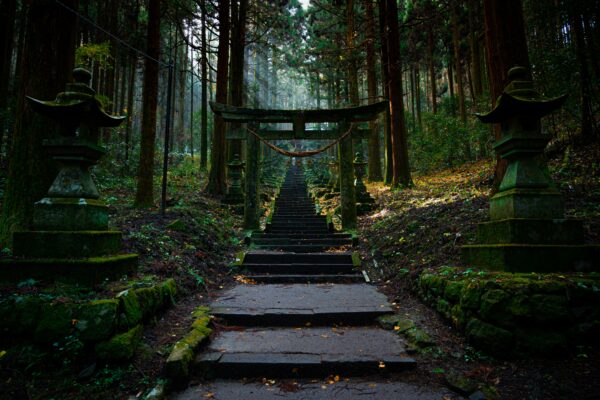
Nara: Ancient Temples and Friendly Deer
Nara, only a brief train ride from Kyoto and Osaka, is a city of tradition and natural splendor that no visitor to Japan should miss when following a comprehensive Japan travel guide. As Japan’s original capital, Nara features some of the nation’s oldest and most significant temples, along with picturesque parks where friendly deer roam freely. For travelers looking to explore the best places to visit in Japan, Nara offers a calm, deeply cultural experience that stands out for its authenticity and spiritual depth.
The heart of Nara is undoubtedly Nara Park, a vast green space home to more than a thousand freely roaming deer. These deer are considered sacred messengers of the Shinto deities and are one of the top draws for visitors. Feeding the deer special crackers, sold throughout the park, is a delightful and interactive experience, especially for families. Within this park, you’ll also find some of the city’s most iconic sites, making it easy to combine nature with rich cultural sightseeing—a must-highlight in any Japan travel guide.
One of the most revered attractions in Nara is Todai-ji Temple, famous for housing the Daibutsu, a giant bronze Buddha statue over 15 meters tall. The temple’s Daibutsuden (Great Buddha Hall) is the largest wooden structure in the world and a marvel of classical Japanese architecture. This awe-inspiring structure exemplifies the grandeur of Japan’s religious history and is often included in top-tier recommendations within the best places to visit in Japan.
Not far from Todai-ji is the enchanting Kasuga Taisha Shrine, renowned for its thousands of bronze and stone lanterns lining serene forested paths. Twice a year during the Lantern Festivals in February and August, these lanterns are lit, creating a magical and spiritual atmosphere that few places in the world can replicate. These experiences are often praised in detailed entries in any high-quality Japan travel guide, as they offer a unique blend of tradition and beauty.
Nara’s cultural richness doesn’t stop at temples. The Nara National Museum houses a stunning collection of Buddhist art and religious artifacts, providing deeper context to the city’s spiritual roots. The nearby Kofuku-ji Temple complex, with its striking five-story pagoda, also ranks high among the best places to visit in Japan, especially for those fascinated by architecture and heritage.
For culinary explorers, Nara offers delicious local specialties that reflect the region’s seasonal ingredients and historic influences. Enjoy kakinoha sushi (wrapped in persimmon leaves), traditional mochi sweets, and regional sake at small family-run restaurants around the park. These food experiences are a delightful part of any Japan travel guide, allowing travelers to literally taste the cultural depth of Nara.
Getting around Nara is easy, whether on foot or by rental bicycle, especially within the park and temple districts. Thanks to its close proximity to Kyoto and Osaka, Nara is ideal for both day trips and overnight stays. Its tranquility, accessibility, and wealth of attractions make it a standout among the best places to visit in Japan.
In this Japan travel guide, Nara shines as a city where sacred history and serene landscapes intertwine beautifully. From majestic temples and sacred deer to enriching museums and seasonal food, Nara embodies the peaceful spirit of Japan. It’s a must-see destination for anyone seeking meaning, tradition, and a deeper connection to Japan’s roots.

Tokyo: The Ultramodern Capital
Tokyo, the bustling heart of Japan, is an exhilarating blend of ultramodern innovation and deep-rooted tradition, making it an essential stop on any Japan travel guide. As one of the best places to visit in Japan, Tokyo captivates travelers with its towering skyscrapers, vibrant neighborhoods, ancient temples, and cutting-edge technology hubs. The city presents a kaleidoscope of experiences, whether you’re fascinated by historical culture, enthralled by modern pop trends, or eager to indulge in one of the world’s most iconic food scenes.
Every district in Tokyo offers a unique flavor of the city’s diverse identity. Shibuya, a key highlight in any Japan travel guide, is renowned for its legendary scramble crossing and buzzing streets filled with shops, cafes, and nightlife. Harajuku, just a short walk away, is the epicenter of youth culture and fashion, with colorful streetwear boutiques and crepe stands lining Takeshita Street. For those with refined tastes, Ginza is the city’s luxury quarter, offering upscale shopping, art galleries, and high-end dining experiences. Meanwhile, Asakusa transports visitors back in time with the historic Sensō-ji Temple, a cornerstone of traditional Tokyo. Wandering Nakamise Street here lets you sample traditional snacks and pick up charming souvenirs.
Tokyo’s culinary landscape is also a key reason it’s featured in every Japan travel guide. Whether you crave high-end sushi crafted by master chefs or want to try authentic local ramen at tiny neighborhood joints, Tokyo serves up both in abundance. Visit the Tsukiji Outer Market to savor the freshest seafood or dive into one of the city’s hundreds of ramen shops that cater to every regional flavor—from miso to shoyu to spicy tonkotsu. Street food is also a must-try, with yakitori skewers, takoyaki, and sweet taiyaki found at markets and festivals throughout the year.
Beyond food, Tokyo hosts an endless array of cultural attractions and seasonal festivals. Witness cherry blossoms in Ueno Park during spring or attend vibrant fireworks festivals in the summer. Anime fans can explore Akihabara’s gaming arcades and shops, while history lovers will enjoy Edo-Tokyo Museum or exploring the old imperial grounds. With its ever-changing vibe, Tokyo never runs out of things to do, making it a cornerstone of any Japan travel guide and certainly one of the best places to visit in Japan.
Navigating Tokyo is a breeze thanks to its world-class public transportation system. The extensive train and subway networks—especially the JR Yamanote Line—connect all major neighborhoods efficiently. The Shinkansen (bullet trains) from Tokyo Station make intercity travel seamless, making it easy for travelers to explore nearby attractions like Mount Fuji, Nikko’s ornate shrines, or Kamakura’s Great Buddha—all recommended in most Japan travel guide itineraries.
In conclusion, Tokyo is more than just Japan’s capital—it’s a living, breathing metropolis where the past and future coexist in harmony. Its dynamic energy, cultural richness, and culinary excellence make it not only a highlight in any Japan travel guide but also one of the best places to visit in Japan. Whether you’re staying for a weekend or an entire week, Tokyo promises experiences that will stay with you for a lifetime.
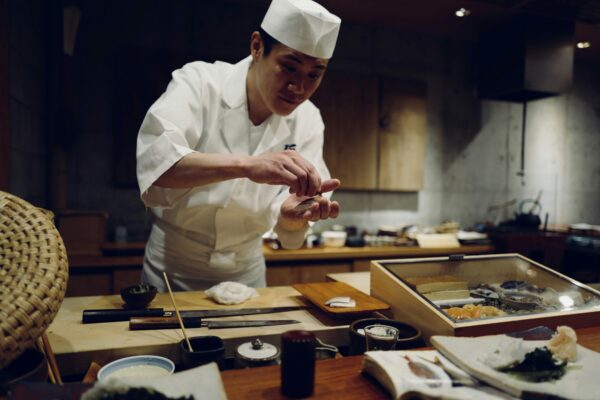
Food Options in Japan
Japan is a paradise for food lovers, offering an incredible variety of flavors and dishes that reflect its rich culture and regional diversity. Exploring the food options in Japan is an essential part of any Japan travel guide, because the country’s cuisine is not only delicious but also deeply connected to its traditions and seasons. Whether you’re dining in a bustling city or a quiet countryside town, the food experience here is unforgettable.
Perhaps the most recognizable Japanese food is sushi, ubiquitous from posh restaurants to everyday conveyor belt sushi shops. Freshness and quality are of utmost importance, and local differences ensure you can sample distinctive fish and preparation methods based on your location. As a case in point, in coastal regions such as Hokkaido, seafood is extremely fresh and plentiful.
Another favorite is ramen, a rich noodle soup available in numerous regional variations like miso in Sapporo, tonkotsu (pork bone broth) in Fukuoka, and shoyu (soy sauce) in Tokyo. Ramen bars are ubiquitous and usually tiny but lively establishments where tourists and locals convene to savor steaming bowls of comfort food.
Tempura, deep-fried and lightly battered seafood and vegetables, is another staple that can be found all over Japan. Its delicate flavor and crispy texture have made it a favorite among most tourists. It is usually served in traditional tempura restaurants with rice and dipping sauce, creating a balanced and filling meal.
Street food is also a major part of Japanese cuisine. Try takoyaki (octopus balls), yakitori (skewered chicken grilled), taiyaki (fish-shaped sweet cakes with red bean paste inside), and other foods at Osaka and Tokyo’s festivals and marketplaces. Such bite-sized foods are ideal for tasting many flavors at one go.
For those seeking true, multi-course dining, Japan’s answer is kaiseki. This ancient meal features seasonal ingredients that are prepared with extreme care and attention to detail and presented with flair. Kaiseki restaurants can usually be found in Kyoto and other cultural centers and are the epitome of Japanese culinary art.
Vegetarian and vegan dishes are becoming more common in Japan, although much of the traditional Japanese food does contain fish-based broth. But numerous temples and specific restaurants serve Shojin Ryori, a Buddhist vegetarian food that is nutritious and flavorful.
With all these varied food choices in Japan, each meal is a chance to discover new flavors and stories. From street stalls to fine dining, this Japan travel guide emphasizes how the country’s culinary experience enhances your travel and invites you to cherish the essence of the nation’s culture.
Japan provides an amazing range of experiences for visitors, combining traditional heritage with cutting-edge technology. This Japan travel guide identifies some of the top destinations in Japan, from the peaceful temples of Nara to the vibrant streets of Tokyo and the natural landscapes of Hokkaido. Each destination has its own distinctive flavor, history, and cultural depth, making for a memorable journey.
Whether you are attracted by serene countryside, cultural heritage sites, diverse food culture, or the bustling city life, Japan has something for every interest and traveling style. Mapping your travel plan around these places to see — as outlined in this Japan travel guide — will enable you to best utilize your trip without leaving out the essential things to see.
As you travel through Japan, take in the nation’s hospitality, taste local cuisine, and soak up its rich culture. With its secure environment, well-organized transport, and friendly locals, Japan is still one of the finest locations in the world to visit. Let this Japan travel guide be your companion as you navigate through your journey, and get ready to be enchanted by the Land of the Rising Sun.
Frequently Asked Questions
What is the best time to visit Japan?
The best time to visit Japan is during spring (March to May) for cherry blossoms or autumn (September to November) for colorful foliage. Both seasons offer pleasant weather and stunning landscapes.
Is Japan expensive for Indian travelers?
Japan can be moderately expensive, but it’s manageable with careful planning. Budget accommodation, rail passes, and local eateries help reduce costs significantly.
What are the must-visit places in Japan?
Tokyo, Kyoto, Osaka, Nara, Hokkaido, and Hiroshima are among the top destinations. Each offers a unique blend of modern attractions and cultural heritage.
What are the top food options in Japan?
Japan is famous for sushi, ramen, tempura, okonomiyaki, takoyaki, and kaiseki. Regional specialties and street food also offer amazing variety for all palates.
Do I need a visa to travel to Japan from India?
Yes, Indian passport holders need a tourist visa to visit Japan. It’s best to apply through the Japanese embassy or consulate in your region.
Is English widely spoken in Japan?
English is not widely spoken, especially outside major cities. However, signs in tourist areas are often in English, and translation apps can help a lot.
What transportation options are available in Japan?
Japan has excellent transportation including bullet trains (Shinkansen), subways, and buses. The Japan Rail Pass is a cost-effective option for long-distance travel.
Are vegetarian food options available in Japan?
Yes, though limited in some areas. Look for Shojin Ryori (Buddhist cuisine) and use apps like HappyCow to locate vegetarian and vegan restaurants.
What’s the etiquette travelers should follow in Japan?
Respect local customs—remove shoes when entering homes or certain restaurants, speak softly in public transport, and bow as a form of greeting.
How many days should I spend in Japan?
A 10 to 14-day trip allows you to explore Tokyo, Kyoto, Osaka, and nearby spots comfortably. If time allows, add places like Hokkaido or Okinawa.



